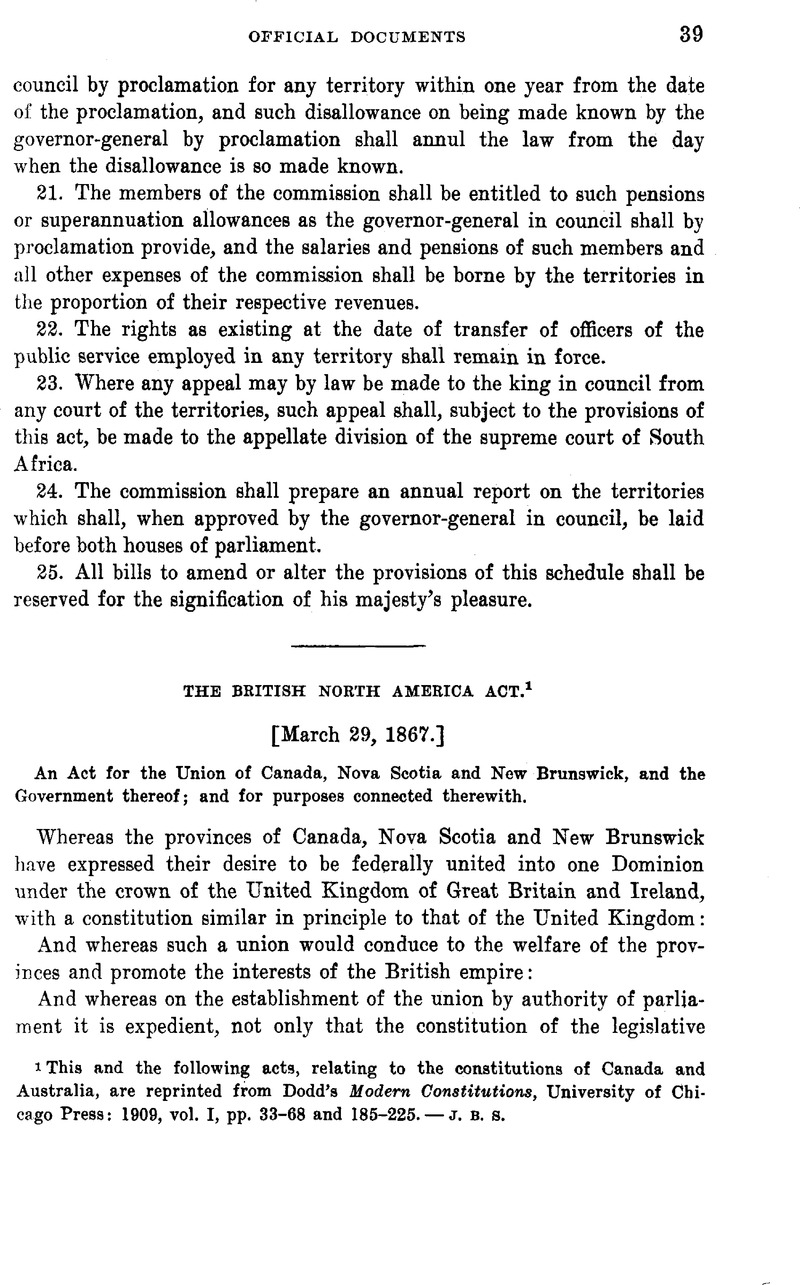No CrossRef data available.
Article contents
Abstract

- Type
- Other
- Information
- American Journal of International Law , Volume 4 , Issue S1: Supplement Official Documents , January 1910 , pp. 39 - 67
- Copyright
- Copyright © American Society of International Law 1910
Footnotes
This and the following acts, relating to the constitutions of Canada and Australia, are reprinted from Dodd’s Modern Constitutions, University of Chicago Press: 1909, vol. I, pp. 33–68 and 185–225. — J. B. S.
References
2 The following additions have been made to the membership of the confederation: Manitoba, July 15, 1870; British Columbia, July 20, 1871; Prince Edward Island, July 1, 1873; Alberta and Saskatchewan,' September 1, 1905. Newfoundland has never joined the union.
3 Repealed and replaced by act of 1875; see p. 69.
4 By the British North America Act of 1871 the Canadian parliament was empowered to make provision for the representation therein of provinces subsequently admitted. Manitoba has 4 senators, British Columbia 3, Alberta and Saskatchewan 4 each, making a total of 87 senators. See sec. 147 for the representation of Prince Edward Island in the Senate.
5 According to the apportionment act of October 24, 1903, the house of commons is now composed of 214 members, of whom 86 are elected for Ontario, 65 for Quebec, 18 for Nova Scotia, 13 for New Brunswick, 10 for Manitoba, 7 for British Columbia, 4 for Prince Edward Island, 5 each for Saskatchewan and Alberta, and 1 for the territory of Yukon.
6 The power to erect or to admit new provinces was extended by the British North America Act of 1871. see this page.




